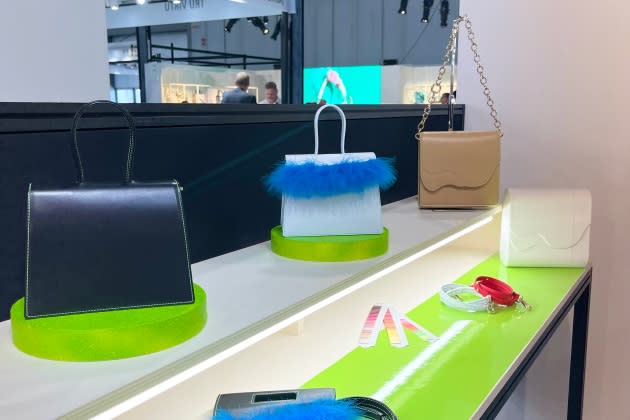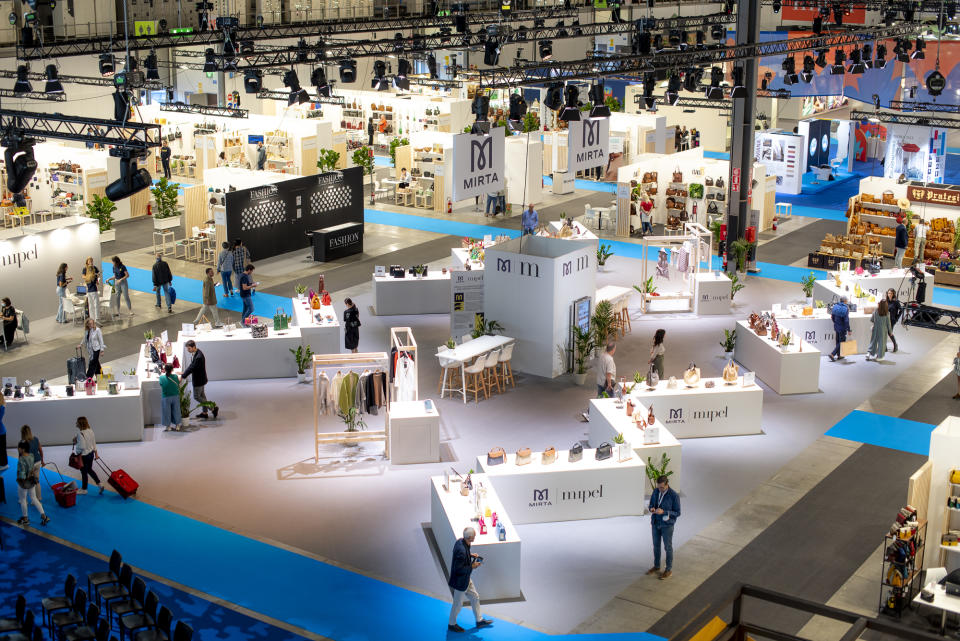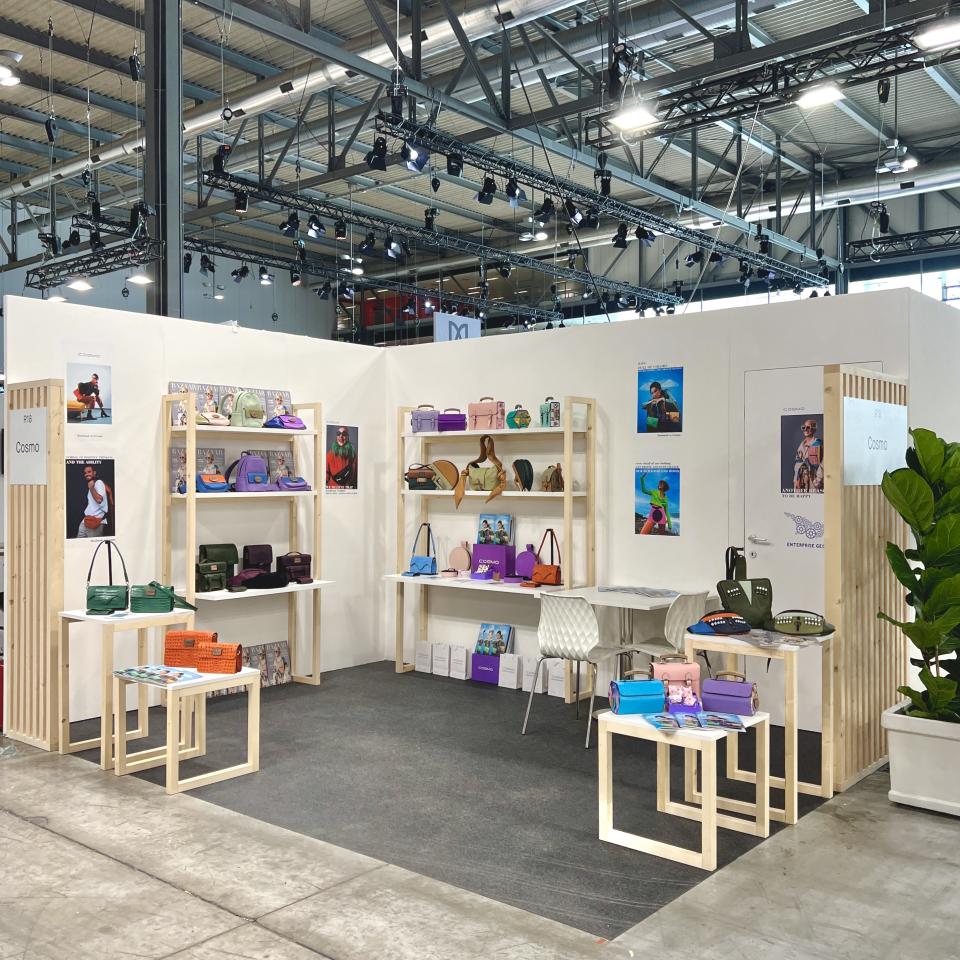Digitalization, Restart of Asian Market Key Factors at Mipel

MILAN — Digitization and a restart of the Asian market were key factors that emerged at the three-day handbags and accessories trade show Mipel. Sustainability and the connection between fashion and Italian art were two other topics among exhibitors presenting their designs for spring 2023.
The global economic crisis, the pandemic and the war in Ukraine formed a dark scenario for the Italian leather goods industry, although the first half of the year filled Mipel organizers with optimism as industrial production increased by 12.4 percent and turnover by 15 percent.
More from WWD
“We are seeing the return of Asian buyers, mainly coming from Japan,” said Franco Gabbrielli, president of Mipel and industry organization Assopellettieri. “We are also hosting 30 percent more exhibitors than last September’s summer edition, which means up to 160 companies and 200 brands.”
Signs of a restart also came from the increased presence of South Korean and U.S. buyers, while the best-performing European countries were Germany and France.
This trend emerged while speaking with exhibitors too. “The forced stop for COVID-19 has been a bad hit, but our Asian clients are coming back,” confirmed Anna Bonfanti, third generation of the family business founded in 1945 in Gorla Minore, in the north of Italy.
The company stood out for its use of natural fabrics: raffia, for example, is the most used material in its production. “In our spring-summer 2023 collection we feature what we call techno raffia, a mix of raffia, cotton and polyester which gives more flexibility to our bags,” Bonfanti said.
One of the company’s bestselling collections sees a classic design combined with another natural material: bamboo wood. “These pieces reflect our desire to meet the needs of Asian clients, Japanese and Koreans above all, as they represent a major part of our exports,” Bonfanti explained.

A fresh, jungle atmosphere set the inspiration for Braccialini. The collection “Occhi di Bagheera” (Bagheera’s eyes) takes its name from a character in Kipling’s “The Jungle Book,” the panther, and gives life to bags whose color and lines mirror the sinuous silhouette of that animal.
Braccialini is aiming at boosting its high-end collection by expanding its monobrand network. “We have dozens of shops mainly in Italy and in the Middle East and we are working on increasing that number: last July we had a new opening in Rome and last August in Florence, while Milan is soon to come,” said Giacomo Gori, sales and retail manager.
These openings follow a three-year plan which includes some key markets like Kuwait and Qatar to reinforce Braccialini’s presence in the Middle East, where the company already has three stores in Dubai.
Speaking about the global market trend, Gori said Braccialini therefore “hopes in a rapid recovery of the European market and the Eastern European countries above all, as we have seen promising signs during the March edition.”
The Asian market is vital for Boldrini Selleria as well. Based near Florence, the company displayed a wide range of vegetable-tanned leather pieces. “Japan is our main Asian market and it stands out for its well defined characteristics,” said owner Luca Boldrini, whose father Scandiano founded the firm in 1955. “The Japanese area in particular looks for products which go beyond the limits of gender, preferring unisex creations,” Boldrini explained.
The constant increase in the cost of electricity is a main concern. “We have met Ukrainian buyers at Mipel and this is a very good sign, but companies are facing an exponential growth in industrial costs that needs to be stopped,” Boldrini observed.
A discussion with political authorities is something already scheduled by Mipel and Assopellettieri’s management. During Assopellettieri General States, which will take place Oct. 18, “We will suggest a strategy of revolving around two main factors — to find the best ways to support smaller businesses and give space to high standard training schools to give new life to our sector,” Gabbrielli explained.
The “Scenario” area at Mipel, which closed Sept. 20, featured some interesting emerging brands like Una de Monaco. South Korean Una Dawoon Byeun founded her company in 2018 and dedicated it to sustainable production. “I’m also trying to bring light to the history of my country to let everyone know it better,” she said. Accordingly, tigers, temples, cherry blossoms and ancient Korean calligraphy have become part of her designs, reflecting the heritage of her country.
Coming up next is the opening of a branch in London. “Up to 90 percent of our turnover comes from online sales by now, but I have prepared multilingual versions of my website to be ready to deliver in Europe,” she added. Her highest-end collection retail at 1,000 euros and up.
Part of the “Scenario” section, the Estelle Rodriguez brand was founded by its namesake Belgian designer. After studying fashion design in Paris and London, she specialized in handbags in Florence until she launched her own company in 2021. “My mission is to give each woman the opportunity of feeling unique by creating limited edition bags,” Rodgriguez said. “Each model is 100 pieces only and they are consciously sourced and produced in Florence,” giving life to a high-end collection whose prices start from 1,000 euros.
The love for heritage and history could be seen in the products of Cosmo, which was founded in 2015 by two young Georgian entrepreneurs. Today, focusing on online distribution through its website and the Etsy platform, Cosmo has seven branches in Georgia and is now expanding its international business: Its handbags are sold in shops in the Netherlands and in Germany, while in October the company will be on the Amazon platform as well.
“Our bags are a tribute to the heritage of our country,” said international sales manager George Kotchlamazashvili. An example is the collection inspired by “King Tamar,” a queen who was named as a king because she was the first queen who reigned in the 12th century: the side panels of bags and wallets are shaped as Tamar’s crown. The concept takes its inspiration from bullet bags, ”which are part of a traditional male dress worn all over the Caucasus region and called chokha,” he said.

Digitalization was key at Mipel to deal with the gap between big and small brands. As COVID-19 restrictions forced even smaller companies to expand their online businesses, Mipel is trying to help brands determine a path structured around clear and simple steps to grow online. This is how the partnership with Mirta started, a platform founded by Martina Capriotti and Ciro Di Lanno and developed to support brands with services ranging from order management to logistics, payments and communication.
Another partnership took the digital experience to the next level at the trade show. Together with Impersive, a company specialized in augmented reality, especially in the fashion industry, Mipel launched a journey into the beauty of Italian history and its contribution to fashion design. With the use of a 3D Oculus, the latest trends were presented through a virtual, immersive trip to four Italian museums (the Museum of Fashion and Costume; the Museum of Design; the Canovian Gipsoteca and the National Museum Salce collection).

 Yahoo Movies
Yahoo Movies 
